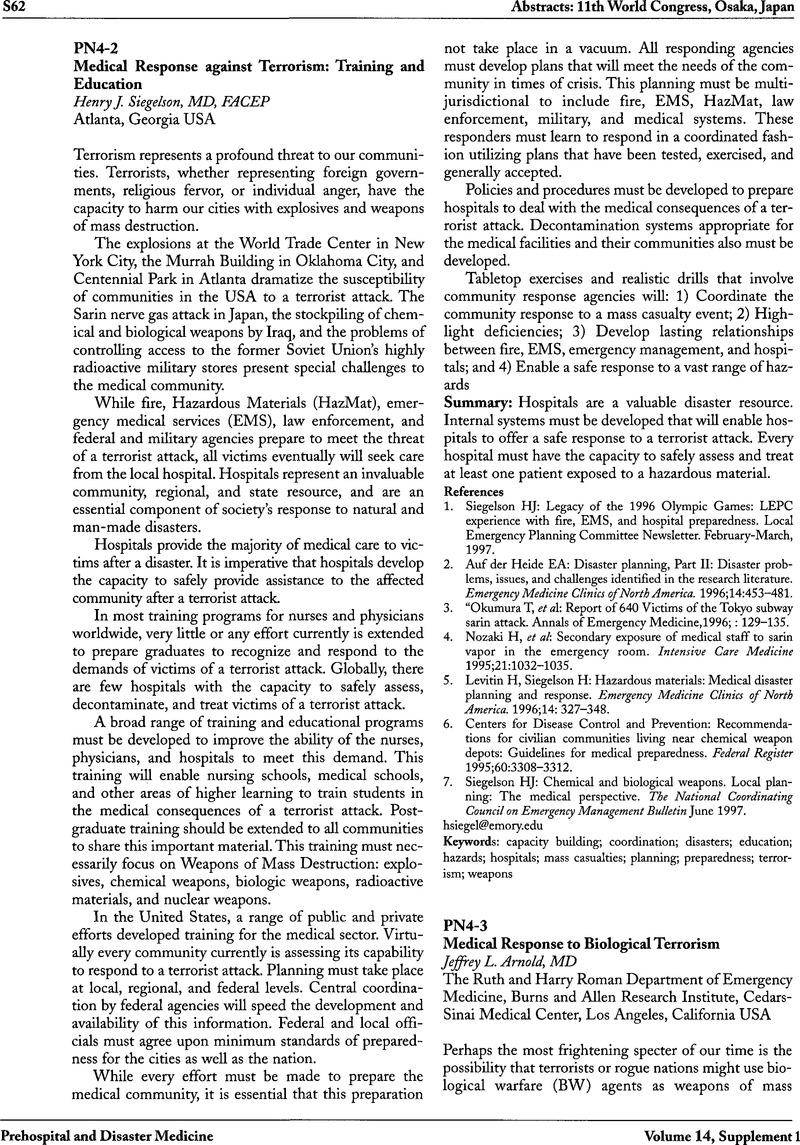Crossref Citations
This article has been cited by the following publications. This list is generated based on data provided by Crossref.
Stratton, Samuel J.
2001.
Editorial Comments on “Y2K Medical Disaster Preparedness in New York City: Confidence of Emergency Department Directors in their Ability to Respond”.
Prehospital and Disaster Medicine,
Vol. 16,
Issue. 2,
p.
94.





